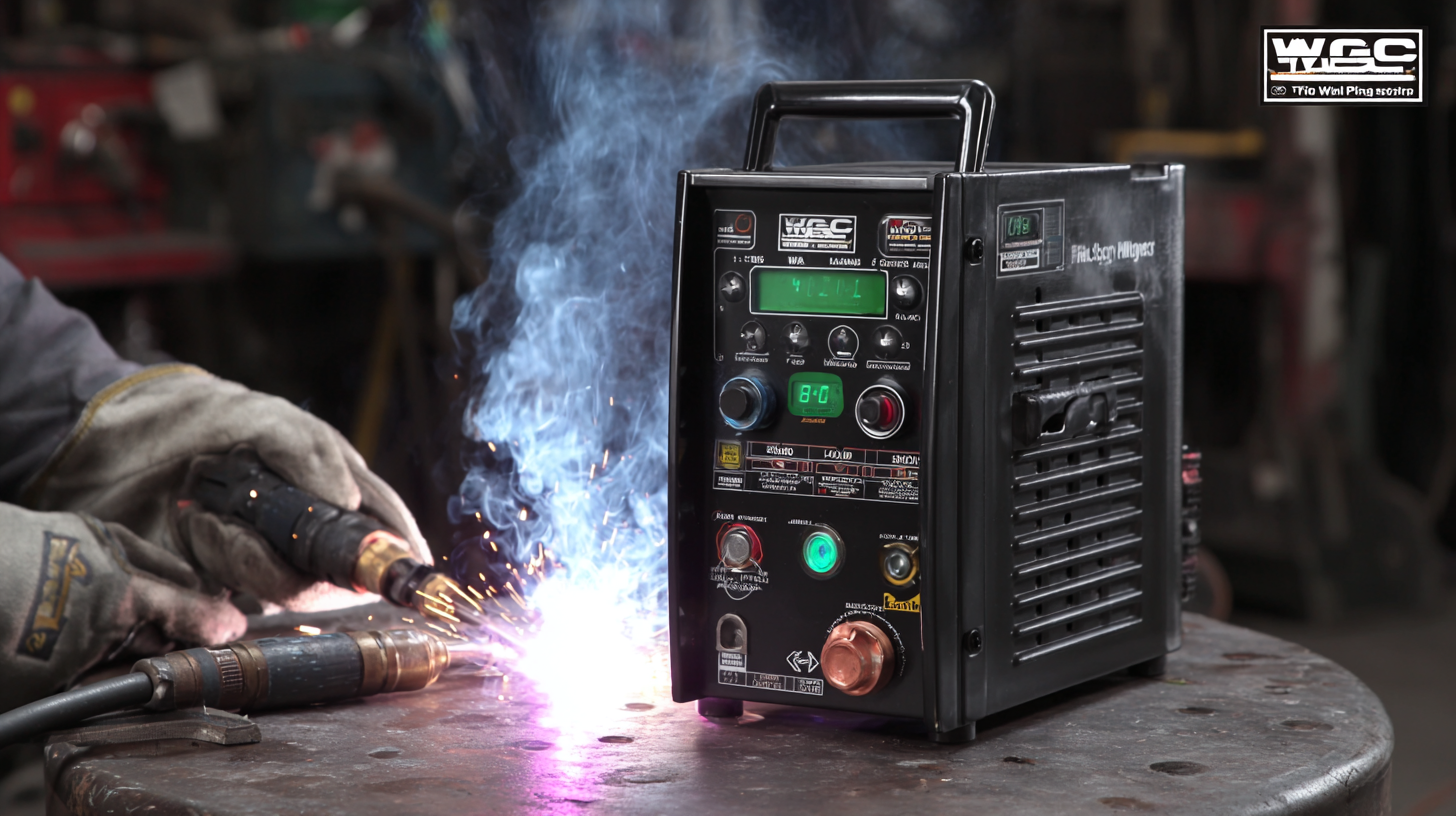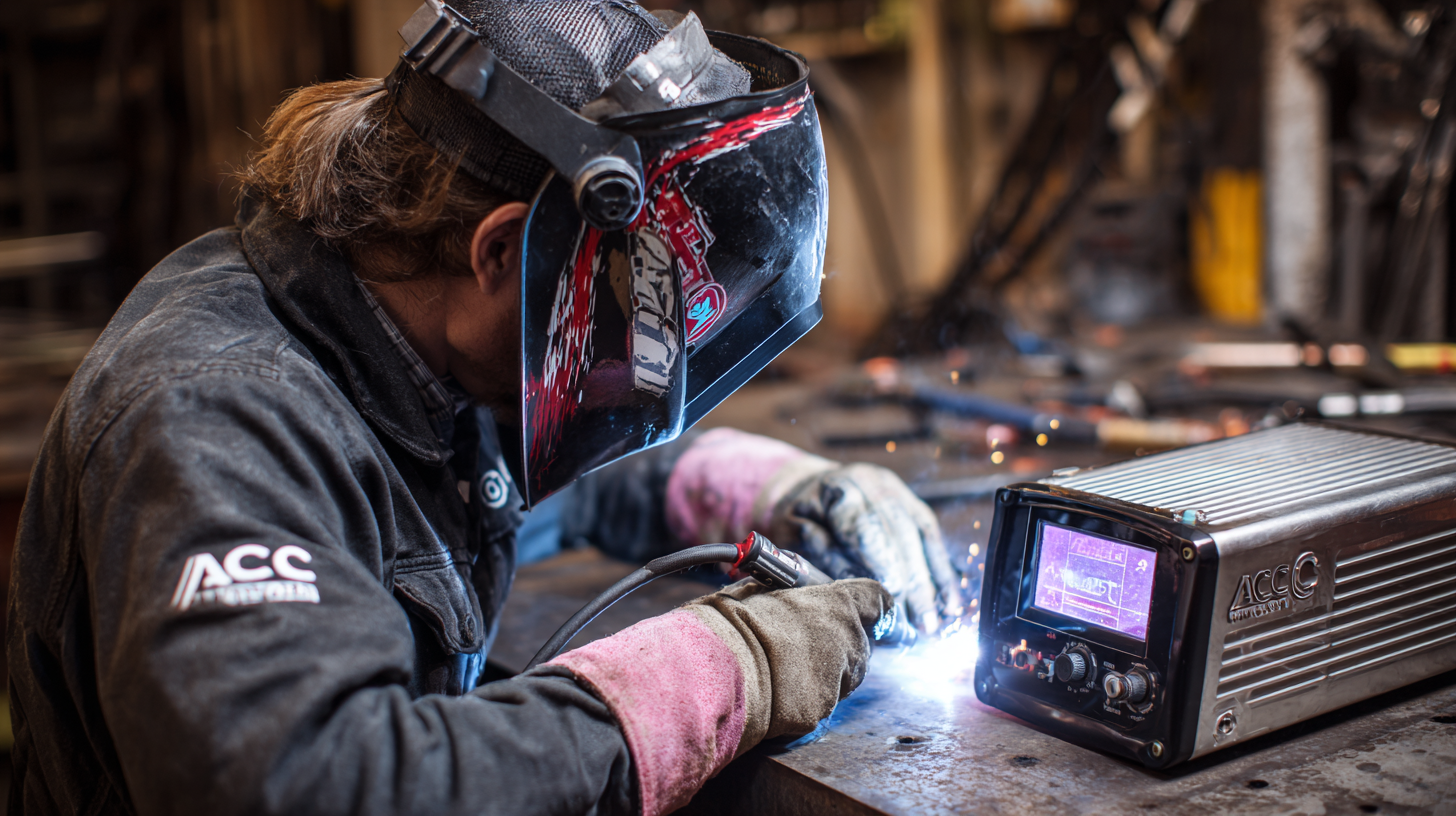The welding industry is experiencing significant transformations, with the global market for arc welding equipment projected to reach $4.9 billion by 2025, according to a report by Market Research Future. Among the various welding technologies, the AC DC TIG welder stands out for its versatility and precision, making it widely applicable in sectors such as automotive, aerospace, and construction. This welding technique's ability to handle a diverse range of materials, from aluminum to stainless steel, has contributed to its rising adoption in manufacturing processes. As industries continue to innovate and seek more efficient solutions, understanding the full potential of the AC DC TIG welder becomes crucial. By exploring its applications and learning how to maximize its benefits, businesses can not only enhance their productivity but also improve the quality of their welds, positioning themselves competitively in a rapidly evolving market.

AC/DC TIG welding technologies are increasingly vital across various industries due to their versatility and high-quality output. According to a market report by Grand View Research, the global welding equipment market is expected to reach $22.9 billion by 2025, with TIG welding being a significant contributor due to its efficiency in achieving superior welds. The ability to switch between alternating current (AC) for aluminum and direct current (DC) for ferrous metals allows industries to utilize a single machine for diverse applications, reducing costs and enhancing productivity.
In the aerospace and automotive sectors, precision is key. AC/DC TIG welders offer control over heat and penetration, providing clean and strong welds that withstand rigorous standards. A study by the American Welding Society found that using TIG welding can increase joint strength and durability by up to 30% compared to other welding methods. Additionally, industries such as fabrication, shipbuilding, and artistic metalwork benefit significantly from the finesse and lower thermal distortion of AC/DC TIG welding, ensuring quality craftsmanship while minimizing rework and material waste.
In the aerospace, automotive, and manufacturing sectors, the application of advanced welding technologies, particularly AC DC TIG welders, is crucial for achieving precision and efficiency. These industries demand high-quality welds to ensure structural integrity and performance. For instance, in the automotive sector, composite materials are increasingly being utilized, with projections indicating that the market for such materials is expected to reach $2.5 billion by 2030, growing at a CAGR of 14.7%. This shift toward composites underscores the importance of adaptable welding techniques that can handle various materials, enabling manufacturers to leverage the benefits of both metals and composites.
When utilizing best AC DC TIG welders in these applications, it's essential to focus on maximizing their benefits. Here are some tips: First, ensure that the welder is well-maintained and calibrated to achieve optimal performance. Regular checks on settings and consumables can significantly enhance the quality of welds. Second, training operators on the specific techniques suited for welding different materials can minimize defects and improve overall productivity. Lastly, incorporating robotic automation into the welding process can further improve accuracy and efficiency, which is vital in high-demand sectors like aerospace and automotive manufacturing. By strategically implementing these practices, industries can fully harness the advantages provided by high-quality welding solutions.
| Industry Sector | Key Application | Benefits of Using AC/DC TIG Welder | Maximizing Benefits |
|---|---|---|---|
| Aerospace | Welding airframe components | Precision welding with minimal distortion | Use proper settings for material thickness |
| Automotive | Exhaust systems and chassis | Strong welds that withstand vibration | Regular maintenance of welding equipment |
| Manufacturing | Fabrication of metal parts | Flexibility to weld various materials | Invest in training for operators |
| Energy | Welding pipelines | Durable connections for high-pressure applications | Use advanced safety protocols |
When it comes to maximizing the efficiency of your best AC DC TIG welder, proper equipment setup and maintenance play crucial roles. A well-configured welder not only enhances your performance but also prolongs the lifespan of the machine. Begin by ensuring that your welding area is clean and free of distractions, allowing for an uninterrupted workflow. This simple tip can significantly impact the quality of your welding.
Another essential tip is to regularly check and adjust your welder's settings based on the material you are working with. Different metals require specific amperage and voltage settings; being proactive in fine-tuning these parameters will result in cleaner welds and reduced splatter. Additionally, keeping the torch and consumables in good condition is vital. Regularly inspect the tungsten electrode and replace it when it becomes contaminated or worn down. This practice not only improves your weld quality but also increases the efficiency of the welding process.
Lastly, make it a habit to perform routine maintenance on your equipment. This includes cleaning the fans and checking for any wear-and-tear on cables and connections. A dedicated maintenance schedule can help you identify potential issues before they escalate, ensuring that your welder remains in perfect working condition. Implementing these best practices will significantly increase the benefits you gain from your AC DC TIG welder.
Investing in a high-quality TIG welder can offer substantial returns when used in various industrial applications. A cost-benefit analysis reveals that while the initial investment might be higher than standard welders, the longevity and efficiency of these machines make them a worthwhile choice. High-quality TIG welders provide superior performance in creating strong, clean welds, reducing the need for rework and material wastage. This translates to lower operational costs and improved productivity, making them an attractive option for businesses looking to enhance their welding capabilities.

When selecting a TIG welder, consider these tips to maximize your investment. First, evaluate the specific needs of your projects, including the materials you will be working with and the type of work you will be doing. This will help you choose a model that suits your requirements without overspending on unnecessary features. Secondly, ensure proper maintenance of your welder by following the manufacturer’s guidelines, as this can significantly extend its lifespan and keep performance at its peak.
Finally, take advantage of training opportunities for your team. Investing in skilled operators who are familiar with the capabilities of high-quality TIG welders will not only optimize your operations but also enhance safety and quality in the welding processes. With the right strategies in place, businesses can unlock the full potential of their TIG welders and enjoy the benefits of increased efficiency and reduced costs in the long run.
As the industry continues to evolve, TIG welding technology is experiencing significant innovations that promise to enhance efficiency and quality. New advancements, such as inverter technology, are making TIG welders more lightweight and portable, enabling easier use in diverse working environments. Additionally, the integration of digital controls and automation is streamlining processes, allowing for more precise welds and reducing the required skill level for operation. These enhancements not only improve the ease of use but also the overall accuracy of the welding process, making high-quality results more accessible than ever.

Moreover, the introduction of advanced materials and filler options is pushing the boundaries of what TIG welding can achieve. With the ability to work with exotic metals and improved filler compositions, industries can now explore new applications that were previously difficult or impossible. These advancements are vital for sectors such as aerospace, automotive, and medical, where material integrity is critical.
As industries adopt these innovations, we can expect a shift in how welding is performed, ultimately leading to increased productivity and reduced costs. As we look to the future, staying ahead of these trends will be essential for companies seeking to remain competitive in the ever-changing landscape of manufacturing and fabrication.
